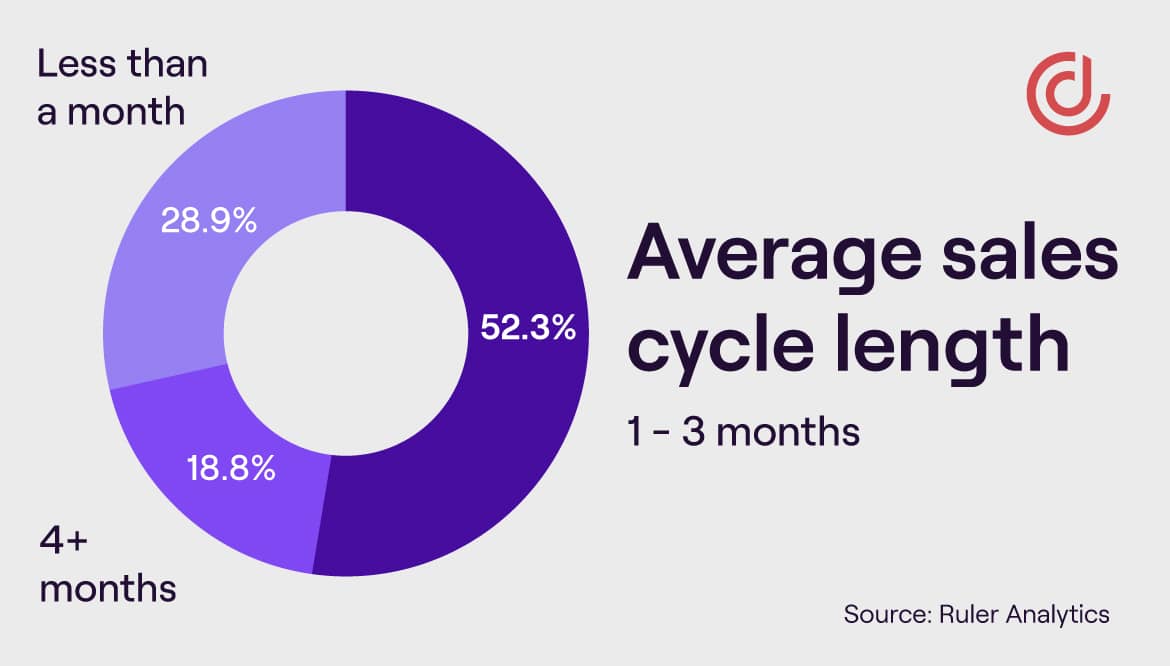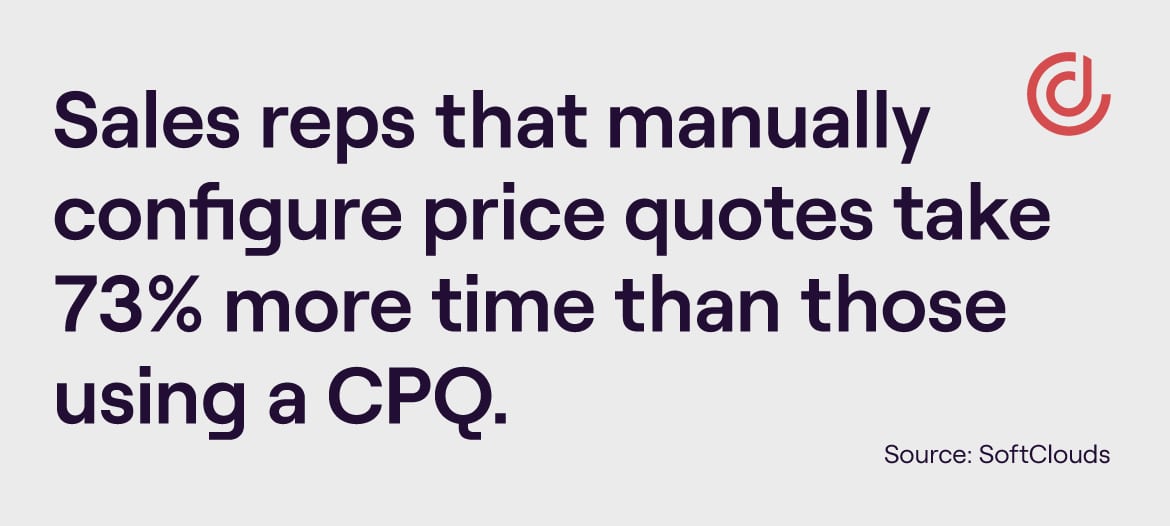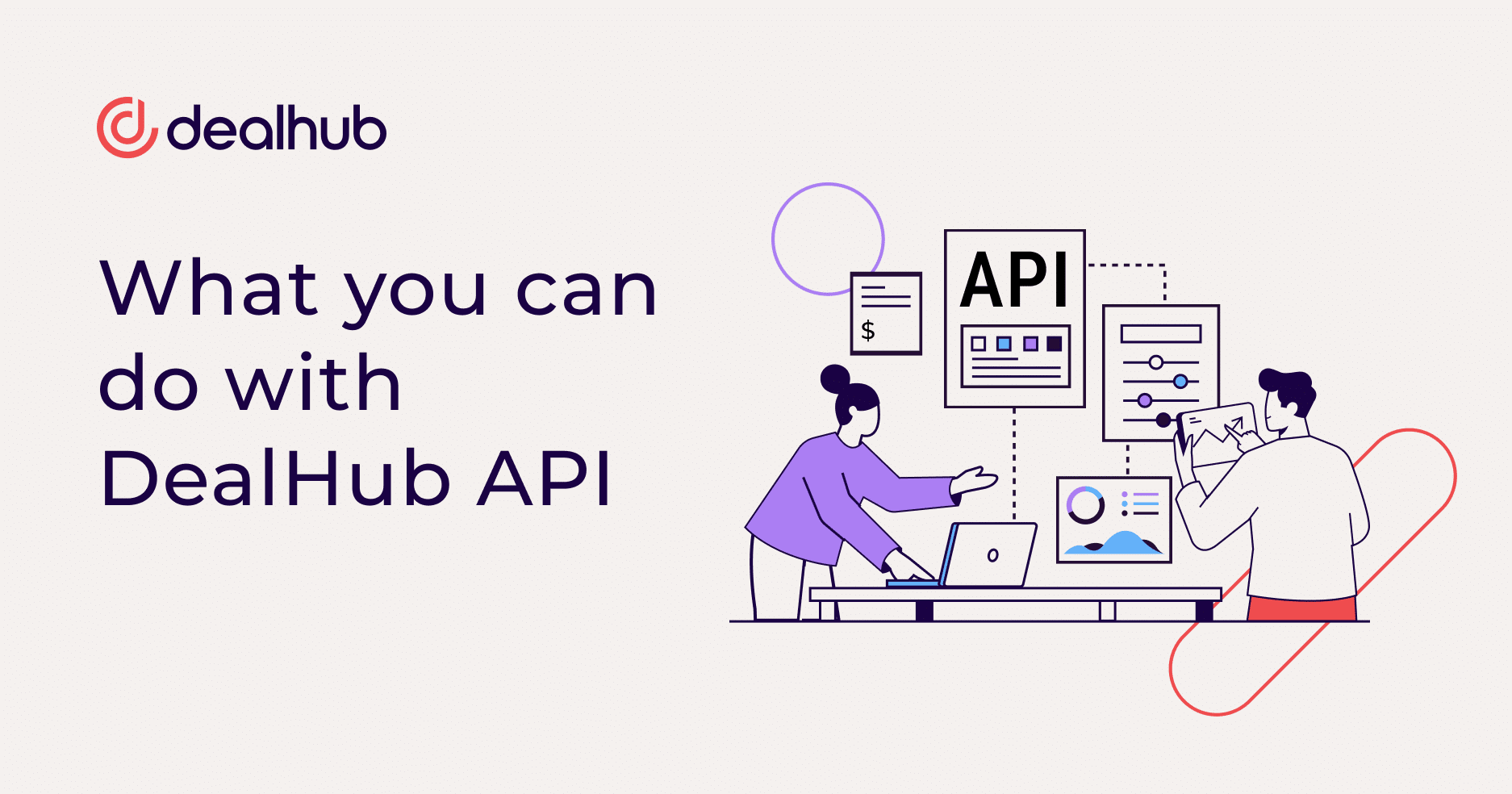Since a company’s success is often determined by its ability to meet strict sales and revenue targets, most companies monitor and aim to minimize the length of their sales cycle. Of course, many factors – like product type, complexity, cost and competitors – play a role in determining sales cycle length. But there are also a number of avoidable obstacles that unnecessarily slow it down.
Achieving shorter B2B sales cycles will enable you to achieve faster time to revenue and facilitate a greater number of deals in your sales pipeline, so eliminating those challenges should be a priority.
Here are some of the most common obstacles that slow down the sales process by placing an extra burden on your sales team, followed by some suggestions to overcome them.

1. Configuring price quotes
When you’re up against the competition, being able to send quotes quickly to prospective customers is of significant importance. How important? Research indicates sales reps that manually configure price quotes take 73% more time to produce a typical quote or proposal than those using a CPQ solution.
The problem is that sales reps typically build price quotes manually for each customer. Not only does this take a lot of time, but it also leads to pricing errors and inaccuracies – and the more products or greater product complexity you have, the more problematic this manual process becomes.

2. Building sales proposals
Sales collateral may also not be branded consistently or follow certain guidelines, meaning potential customers are exposed to materials that reflect a lack of professionalism or fail to deliver a consistent branded experience through their buying journey.
B2B sales teams also tend to be responsible for putting together sales proposals manually. This lack of standardization leads to inconsistencies from customer to customer, as well as from rep to rep. As a result, they may be offering different prices and discounts for each deal, and not as a result of any particular strategy.
3. Lack of buyer insights
Research shows that 70-80% of B2B buyers prefer to interact with customers online and remotely, which is an ongoing trend that has been accelerated since the start of the pandemic. As a result, finding efficient ways to communicate with customers is crucial to your success.
For example, when sending out a proposal, you don’t know who it’s been shared with, and it’s not always clear how or when it’s best to follow up. As a result, not only does your sales cycle slow down, but you’re missing valuable information that allows you to move deals forward in a strategic and efficient manner.
4. Inefficient contract management
Traditionally, buyers and sellers manage contracts by sending emails, PDFs and Word documents back and forth. Documents being shared this way is a lengthy and inefficient process that often leads to confusion around having multiple versions of the same document being sent to decision-makers. In addition, you can’t always be sure the right people are seeing it, potentially leading to unnecessary delays and miscommunications.
5. Lengthy approval process
In addition to coming at a high cost, B2B buying decisions can affect multiple departments and processes, which is why multiple stakeholders are often involved. Securing the approval and signatures from all the right people can be a difficult and time-consuming process.
This issue is exacerbated when buyers and sellers need to communicate and align on a whole host of details across different departments and different time zones, without a single up-to-date repository for all of that information.
The solution: one fluid sales motion
With DealHub’s leading CPQ and CLM software, you can streamline your sales process and achieve one fluid sales motion. Let’s explore what that means.
Connect each stage of the B2B sales process
Rather than relying on many separate sales tools, consolidate a variety of them into one coherent stack for managing the entire quote-to-cash process. What does this look like? Connected sales proposals, document generation, CPQ, CLM, subscriptions, and eSign, all on one uniform platform.
The benefits of implementing one unified platform across the buying process include:
- No longer needing multiple tools where one would do
- Enabling your team to use and maintain just one platform instead of many
- Empowering your reps to focus on selling instead of administrative work
- Complete oversight of the entire sales process so you can minimize friction points
Automate and eliminate time-consuming tasks
Nowadays, most manual and administrative work can and should be automated. Not just because they are prone to human error, but also because they require large amounts of time on a regular basis.
For example, by ensuring your sales tools sync automatically with your CRM, you can avoid manual data entry and ensure information is up-to-date throughout the entire sales process – and beyond. This allows your sales reps to focus on selling, and frees up your operations folk to focus on more impactful activities.
In addition, parallel approval workflows can dramatically streamline and accelerate the deal-approval process – by automatically sending documents for approval in a sequential manner, and triggering re-approvals when changes are made or suggested by certain stakeholders.
Gain real-time buyer insights
Real-time buyer insights provide you with information on where your buyers stand in the process, such as who has viewed your proposal, who it’s been shared with, who has or hasn’t opened it, and what content they’ve been interacting with.
This is just the tip of the iceberg of valuable insights that your sales team can leverage in order to follow up more strategically, loop in additional stakeholders when necessary, and accelerate the deal-closing process.
What’s next?
There are many friction points in the B2B sales process that can slow down your sales cycle or even bring it to a screeching halt. And as we’ve attempted to demonstrate here, relying on a series of manual and outdated practices opens the door to inefficiencies, inaccuracies and costly setbacks.
Your solution is to leverage a unified revenue hub that speeds up and streamlines your entire quote-to-close process.
With one fluid sales motion, you can:
- Adapt your selling process to today’s digital realities
- Connect the different stages of your B2B sales process
- Automate and eliminate time-consuming and error-prone tasks
- Gain real-time insights that help you move sales forward quickly
Want to see how you can deliver one fluid sales motion for business?
Request a demo




